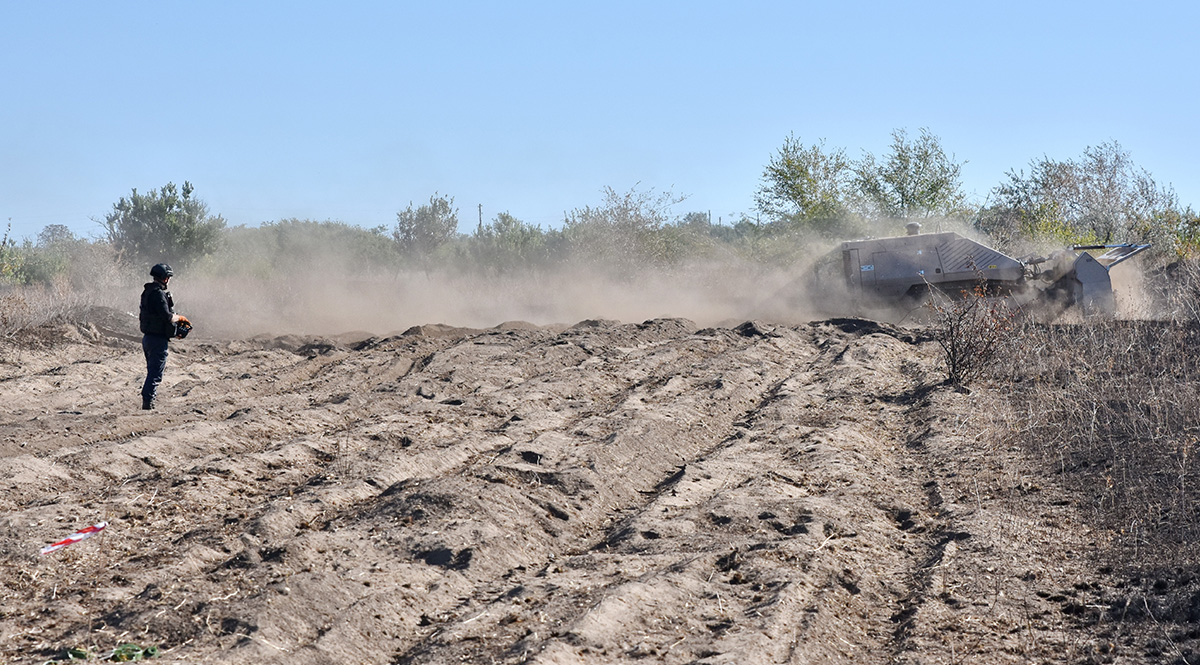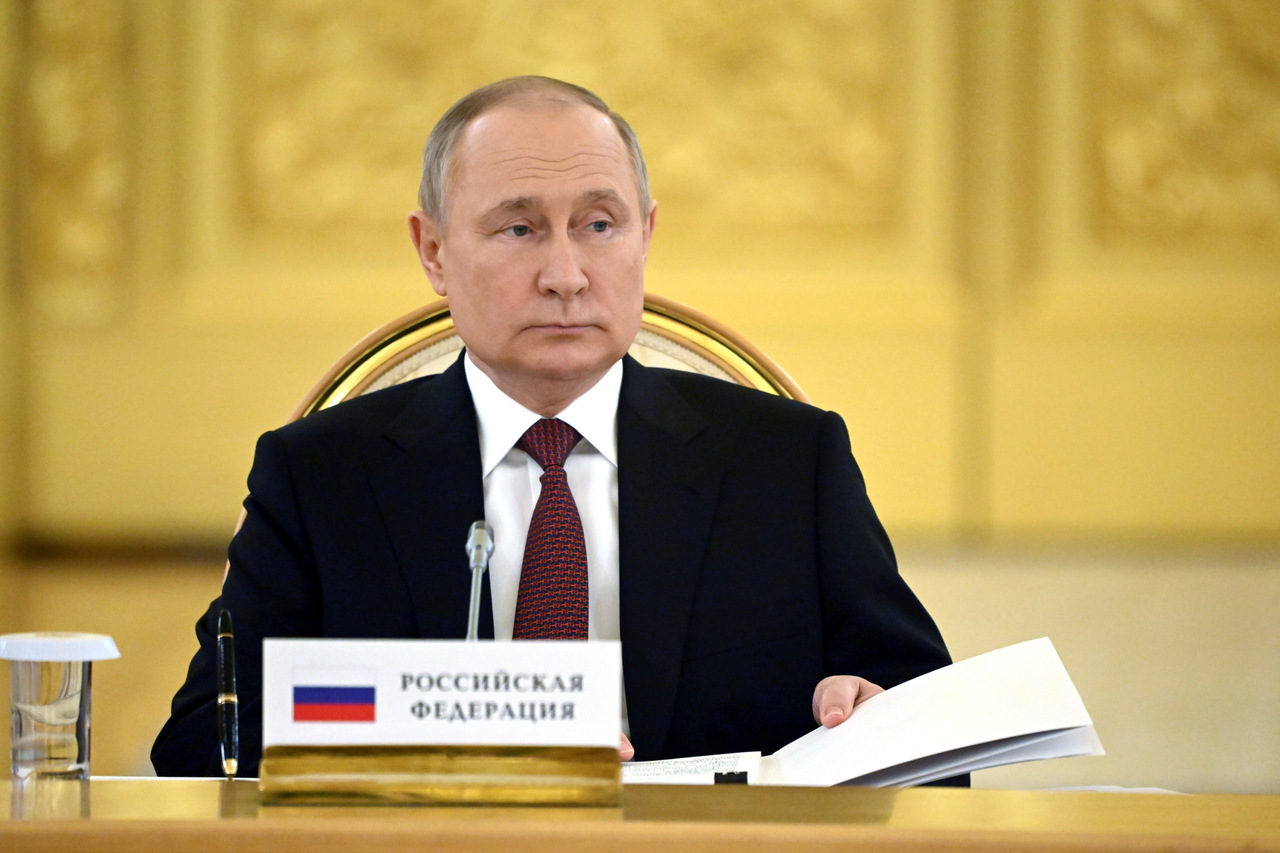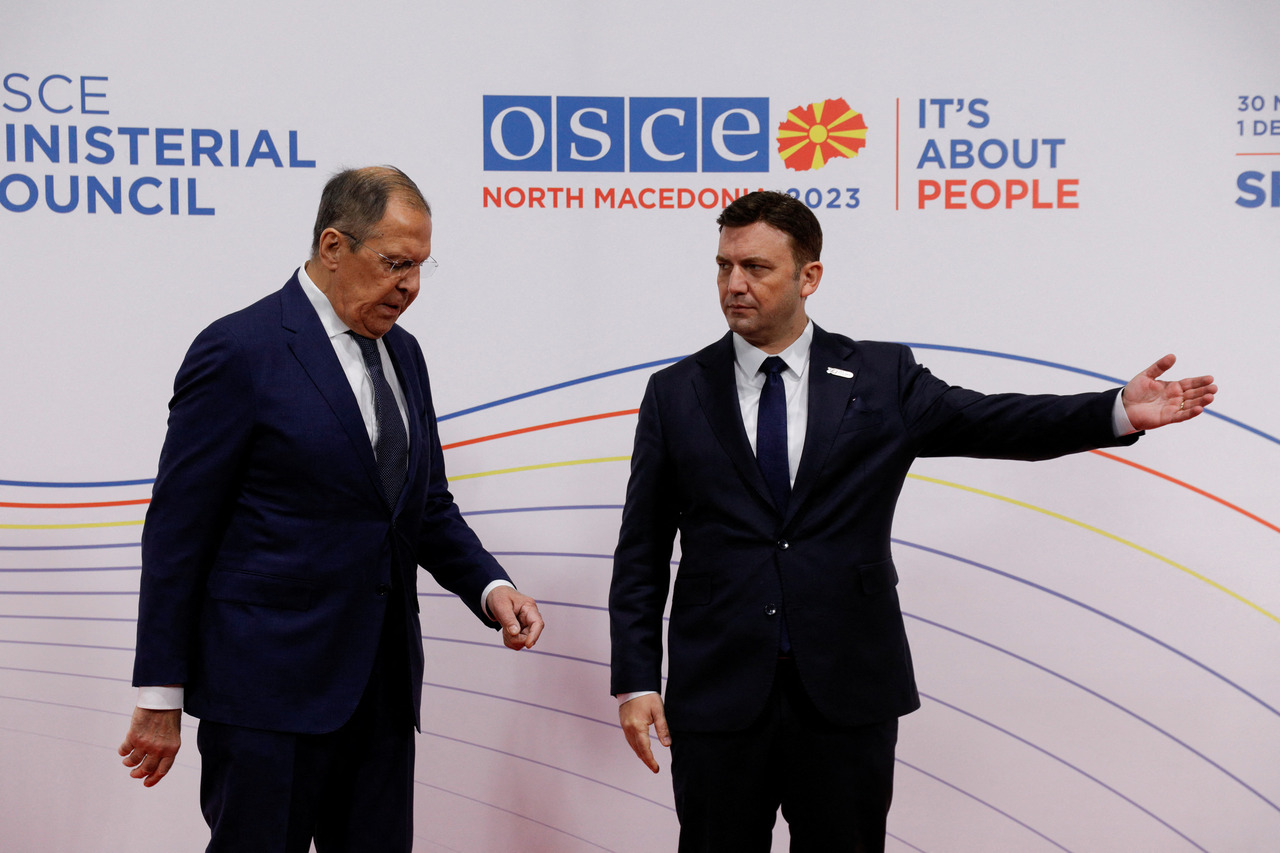Defence of Baltic States, Poland Runs into Ottawa Treaty on Mines
By deciding to build a defence line on the border with Russia and declaring the possibility of using anti-personnel mines, representatives of the Estonian parliament have opened the debate on possible withdrawal from the 1997 Ottawa Treaty on anti-personnel mines. This step may be necessary for the Baltic States to protect their territories from aggression, as they are faced with a lack of operational depth. However, for other states, including Poland, which have other power-projection capabilities, it is a last resort.
 Andriy Andriyenko / Zuma Press / Forum
Andriy Andriyenko / Zuma Press / Forum
On 12 January, Leo Kunnas, chairman of the Estonian parliament’s National Defence Committee, stated that Estonia might consider securing its border with Russia with, among other things, anti-personnel mines. Although Kunnas is a member of the opposition Conservative People’s Party, his words sparked a debate about the potential consequences of such a decision, including possible withdrawal from the Ottawa Treaty and how to defend NATO’s Eastern Flank countries. It was intensified by the signing of an agreement by the Baltic states on 19 January to establish a common line of defence on their borders with Russia and Belarus, which may involve the use of minefields. The effectiveness of mines has been demonstrated by similar lines in Ukraine (which has been a party to the Ottawa Treaty since 2005). The Ukrainian armed forces mainly use anti-personnel mines (not covered by the treaty). Data published by, among others, the UN in 2023 shows that the Ukrainians use anti-personnel mines to a limited extent. By contrast, they are widely used by Russia (which has not signed the treaty), which has mined the Donbas areas it has occupied since 2014.
Origins and Key Provisions of the Treaty
Anti-personnel mines are designed to harm enemy soldiers and, being easy and cheap to produce, were widely used in 20th century conflicts. However, even many years after the conflicts have ended the mines continue to inflict injury and death on civilians and jeopardise safe reconstruction as well as the return of refugees. It was largely because of the need to protect civilians, including children, that the International Campaign to Ban Landmines was founded in 1992.
Adopted in 1997, thanks to the Campaign’s efforts, the Ottawa Treaty is a total ban on the use, development, production, stockpiling, and transfer of anti-personnel mines (other than for destruction), as well as assisting, encouraging or inducing such activities (e.g., by other states). It has been ratified by 164 states, including NATO neighbour Belarus (2003). They agreed to destroy their stockpiles, except for mines for demining, detection, or destruction training purposes no later than four years after the treaty entered into force for each state. The treaty also provides for, among others, reporting, consultation, and dispute-resolution mechanisms to increase the transparency of actions taken by the parties to fulfil their obligations.
Withdrawing from or Suspending the Treaty
The only other option in the Ottawa Treaty to change a state-party’s obligations, apart from amending the document, which would involve a lengthy renegotiation of the act and require the consent of two-thirds of the parties, is to withdraw from the entire agreement. Any state can do so at any time by notifying the other parties and the UN Secretary-General or Security Council. It must at the same time fully justify its decision, although it is not subject to the approval of the other parties. The treaty ceases to be binding on that state after six months unless it is involved in an armed conflict, which extends the treaty obligations until the end of the conflict. After the Russian aggression in 2014, Ukraine reported that it was unable to ensure compliance with the treaty in the occupied territories, and that Russia was responsible for respecting the convention there.
Suspension of the treaty is possible under Article 57(b) of the 1969 Vienna Convention on the Law of Treaties (VCLT), but requires consultation and the consent of the other parties. Alternatively, a state may invoke Article 62 of the VCLT on a fundamental change in circumstances from those existing at the time the treaty was concluded. An example of such a change may be an increase in hostile actions by another state, with the treaty party arguing that it would not have joined the treaty if the aggression had occurred earlier because the treaty obligations limit its ability to defend itself (this occurred, for example, in 2023 when the NATO states suspended the application of the Conventional Armed Forces Treaty in Europe after Russia’s withdrawal from it). It must then inform the other parties to the treaty of its decision and indicate the measures it intends to take with reasons, and the other parties have three months to object (this time can be shortened in urgent cases). An objection implies that a peaceful solution must be found, such as through negotiation or mediation. Selective suspension of a treaty only between allies—upon their consent—to leave out parties who may be opposed, is difficult to justify in view of the treaty’s purpose of the elimination of anti-personnel mines. However, it is possible to suspend—in the absence of opposition from other parties—selected treaty obligations, such as allowing the purchase and use of mines, while maintaining the obligation to report on their deployment. Attempting to suspend a treaty on the basis of the VCLT does not necessarily guarantee the effectiveness of the action taken, as it depends on the reaction of the other parties to the treaty, meaning agreement or at least no objection.
The Treaty and NATO and Eastern Flank States
Of the NATO states, only the U.S. is not party to the Ottawa Treaty. However, in 2022, the administration issued a unilateral statement that the United States would abide by its provisions, with the exception of the Korean Peninsula, where anti-personnel mines are used to defend South Korea.
At the same time, due to the growing threat from Russia, the Eastern Flank countries are increasingly discussing ways to potentially defend themselves, taking into account their geography and military capabilities. It cannot be ruled out that due to the lack of operational depth and the ability to use force on the opponent’s territory, the Baltic states, as part of the construction of a system of engineered barriers on the border with Russia and Belarus, will decide to use anti-personnel mines as an effective means of delaying actions carried out by an aggressor. However, this decision assumes a military operation will be conducted on their territory. Poland wants to avoid such a situation and presumes that the opponent will be prevented from reaching its border through the use of, among others, aviation and rocket artillery, including long-range munitions. At the same time, Poland has the possibility to undertake exercises and other activities with non-parties without violating the Ottawa Treaty because it made such a declaration upon ratification (Czechia did so also).
Conclusions and Recommendations
The possible withdrawal from the Ottawa Treaty by some NATO states or suspension of its application is legally possible, but will set a precedent. It may encourage, for example, some African states to act similarly and expose NATO members that have previously criticised the use of anti-personnel mines as inhumane to accusations of hypocrisy. It will also mean changes in the Alliance’s defence plans and strategic communications towards Russia and to the treaty parties. Thus, a decision on whether to suspend or withdraw from the Ottawa Treaty should be agreed with the Allies. If a larger number of NATO members would like to terminate the treaty, this should be preceded by consultations with the U.S. on a potential change in its policy on the use of anti-personnel mines in the event of an escalation of the situation on the border with Russia or Belarus.
In the case of Poland, withdrawal from the treaty may be perceived as questioning the previous policy of building defensive projection capability by accepting that the enemy will be on its territory. Therefore, it would be worthwhile for Poland to begin talks on a common approach to defensive actions by all states on its Eastern Flank, including the possible role of anti-personnel mines, also in the context of other available instruments of warfare and the risks to civilians when using them. Russia may perceive the lack of agreement in this regard as a sign of weakness, assuming that NATO states do not have a common concept for the defence of allied territory.
At the same time, it would be advisable for Poland to carry out an analysis of its own capacity to build obstacles to troop movement (legal conditions, including land ownership, available equipment and storage capacity), as part of the whole spectrum of potential defence activities.





.jpg)
